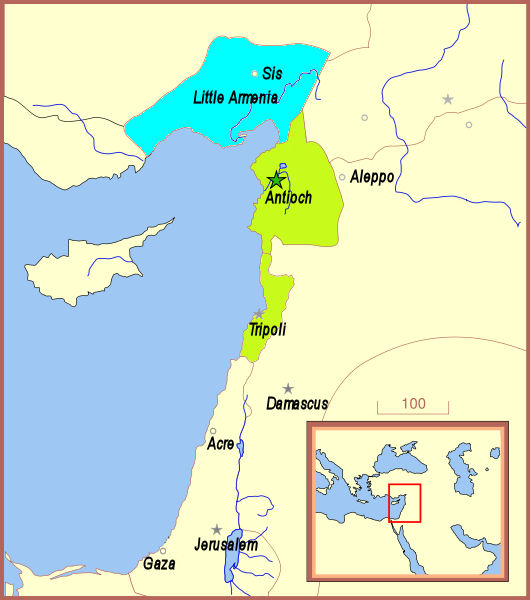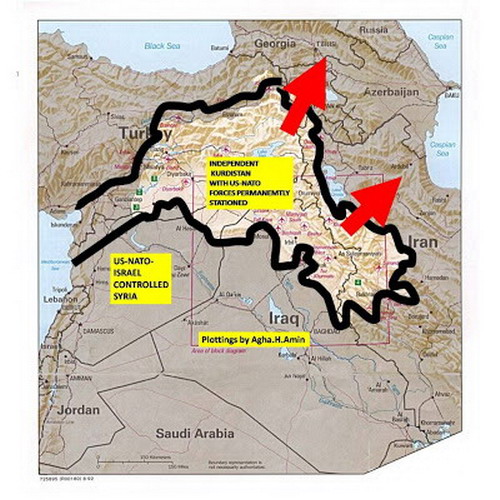Syria and its Neighbors no.1 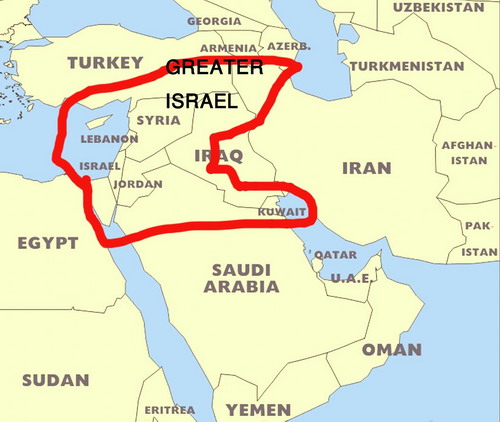 |
|
This Site |
Site Map Contents in Alphabetical Order |
|
Brit-Am Discussion Group |
Research Recognition Reconciliation | Contents by Subject |
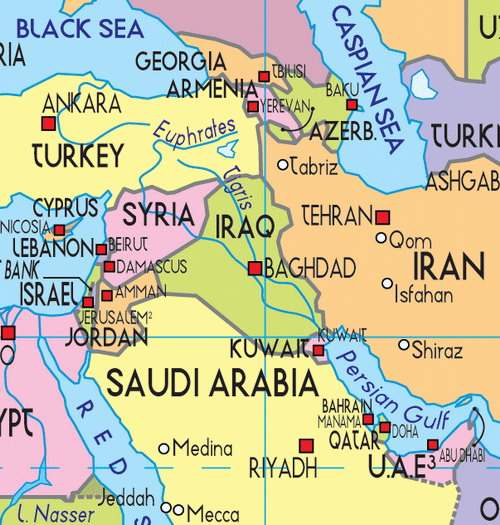 Syria and Its Neighbors, part one ==== ==== Contents: 1. Introduction. 2. The Alawi of Syria 3. The Alevi of Turkey 4. Syria- Background. 5. Arabia 6. The Hashemite Feisal in Syria 7. The Creation of Transjordan or Jordan as it is now known. 8. Lebanon. 9. The Ancient Reubenite and Israelite French Links with Lebanon and Syria 10. The French in Syria. ==== ==== 1. Introduction. Bashar Hafez al-Assad is (since the year 2000) the President of Syria. Assad is a member of the minority ethnic-religious semi-pagan group known as the Alawi. Assad inherited the rulership from his father who ruled Syria for 30 years before him. At present a Civil War is waging in Syria. This conflict may well soon involve the State of Israel, the USA, Britain, and France. The Civil War began in 2011 and is still going on. More than 100,000 people have been killed. More than 1.7 million Syrian refugees have fled to the neighboring countries of Jordan, Iraq, Lebanon, and Turkey. As the civil war nears its second year, the chances are that Syria will break up into various ethnic enclaves. 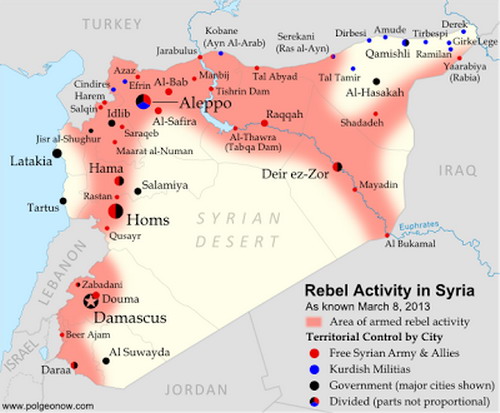 ==== ==== 2. The Alawi of Syria. The Alawis comprise 12% of the population of Syria but today rule the country. 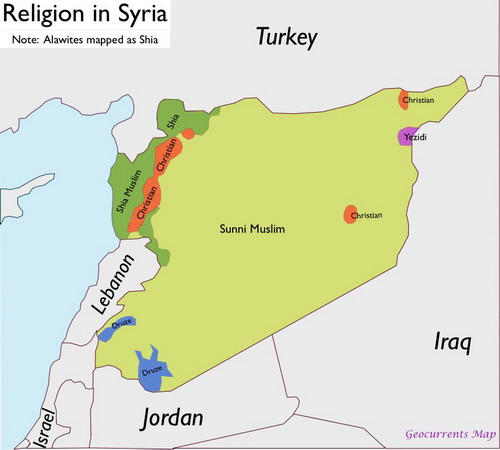 In the past the Alawites were a persecuted, exploited, and despised minority whose women before marriage often served as maids and virtual sex slaves for rich Sunni Muslems. It has been estimated that up to 25% of the Alawis born in the 1930s and 1940s were the products of such unions ("The Alawi Capture of Power in Syria", Daniel Pipes, 1989). The Alawis are both a people and religion. They existed before Islam and probably also before Christianity. This people have shown themselves to be as nasty, vindicative, sadistic, and as fanatically anti-Jewish as any of the other Arab groups. The Alawis were identified in the past with the ancient Canaanite Amorites (Allen H. Godbey). Others linked them with the Ten Tribes of Israel. This claim however never seems to have been taken seriously. The Alawi existed before Islam but later adopted a superficial veneer of Islamic doctrine. The Alawis are also known as Nusaryeh and may have influenced the formation of early Christianity. At all events, they later adopted much from Christianity. Under the French they presented themselves as having been secret Christians who adopted a facade of Islam (Daniel Pipes). Today, they emphasis an affinity with Shiite Islam. The Alawi have indeed been under the rule of Islam for centuries, now resemble Shiite Muslims, and the rank-and-file may identfiy themselves as such. In 1974, Musa Sadr, a leader of the Twelvers [Mainstream Shiites] of Lebanon issued a religious legal ruling (fatwa) stating that the Alawites were a community of Twelver Shi'ite Muslims. Most Muslims still consider the Alawites to be pagans. Their culture and social psychology however appear to be close to that of the Shiites. This is significant in light of the support Assad receives from the Huzbullah Shiites and the Shiite rulers of Iran. The Assad dominated establishment in Syria in effect works towards turning the Alawis into full-fledged Shiite Muslims. Religious distinctions from the past are blurred over. Being an Alawi becomes a matter of family tradition often along with a more liberal attitude towards females, etc. Nevertheless, most Syrian Muslims consider the Alawites to be non-Muslims. cf. # .. the habit adopted by Syrians of referring to the Alawites with the code word 'Germans' in Arabic, alawiyyin (Alawites) and almaniyyin (Germans) are similar. # http://www.independent.co.uk/voices/comment/robert-fisk-alawite-history-reveals-the-complexities-of-syria-that-west-does-not-understand-8518455.html 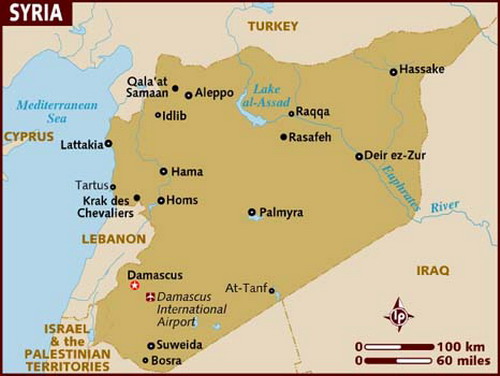 Assad also receives some support from the Sunni (mainstream Islam) merchant classes around Damascus. Many of these may be descended from non-Israelite Samaritans (2-Kings 7:24). The Samaritans now number only a few hundred. In the past however they were quite numerous (see: THE SAMARITANS. Do traditions of British and French Kinship Reflect Ancestral Connections?). The Samaritans once were a majority of the population of Damascus. See: Jerusalem News-466 http://www.britam.org/jerusalem/jerusalem451to480.html#tag16 #2. Background. THE ALAWIS; Rulers of Syria and the Hizbollah (a) THE ALAWIS (b) Syria After Asad by Daniel Pipes The Alawites are sometimes referred to as "Nusaryis" or as "Ansari".  A Syrian Army defector, Brigadier General Mustafa al Sheik, reported that most of the chemical weapons of Syria have been transferred to Alawite areas in Syria in Latakia and near the coast, "where the regime has the ability to fire them using fairly accurate medium range surface-to-surface missiles" (HaModia, A24, September 3, 2013). Some chemical munitions remain in and near Damascus, and have been deployed with artillery shells. "It is a matter of time before fairly large warheads are used", he said. ==== ==== 3. The Alevi of Turkey. 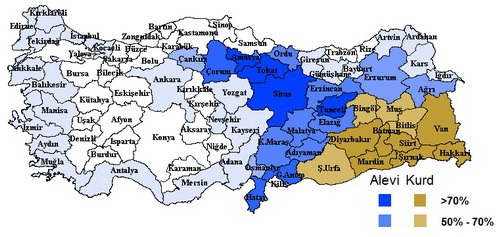 The Alawis are linked to the Alevis of Turkey. The Alevi number from 10 to 20 million or 15 to 30% of the population. They are persecuted. Many Alevis find it expedient to hide their origin. The present leader of the Opposition in Turkey is of Alevi origin. President Erdogan once referred to him as the equivalent in Turkish of "a nigger boy". [Arabs and Turks are more anti-black than the KKK in the USA!] The population of Turkey is mainly derived from ancient peoples who were conquered by nomads who spoke Turkish. The Turkish language and culture along with Islam was imposed on the local population. The Alevis are represented more amongst the Turkish, Turkmen, Tatar, Azeri, Zaza and Kurdish minorities in Turkey. The Alevis also derive from those of the original population who kept much of their pagan traditions but evolved with them in an Islamic framework. There were Turkic tribes from Central Asia who settled in northern Iran and eastern Turkey. These were converted to Shia Islam and later became part of the Alevi continuum. Islam is divided between Shiites and Sunnis. The ruling majority in Turkey is Sunni. The Alevis are considered a branch of the Shiites. Some expressions of the Alevi religion are derived from ancient pagan, Christian, and Gnostic sources. Some Alevis speak of a trinity of God, Muhammad, and Ali. Ali was the son-in-law of Mohammed and is idolized by many Shiites. The Alevis were supporters of Kemal Ataturk (1881-1938) who founded modern Turkey. Ataturk attempted to define anew Turkish consciousness along nationalistic, secular lines. Some 20% of Alevis are Kurds and 25% of the Kurds in Turkey are Alevi. Kurds comprise about 20% of the population of Turkey, mainly in the east. Minorities make up ca. 30% of the population of Turkey which numbers ca. 76 million. [Note most of the figures given above are approximations and may not always be consistent with each other.] We see here an interesting paradox. The Alevis are mainly descended from alien Turkic type newcomers BUT their religion has more aspects of the original native pagan traditions! ==== ==== 4. Syria- Background.
Syria , officially the Syrian Arab Republic, is a country of fertile plains, high mountains and deserts. It is home to diverse ethnic and religious groups, including Kurds, Armenians, Assyrians, Turks, Christians, Druze, Alawites, Shiites, and Arab Sunnis.
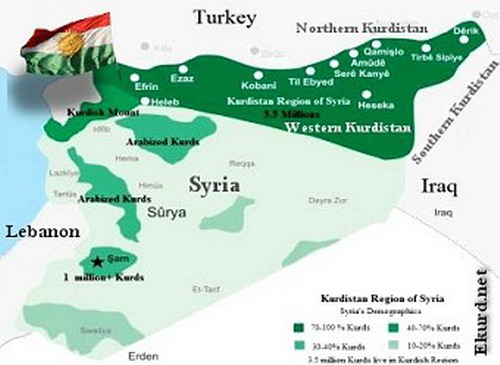 The modern Syrian state was established after the First World War as a French mandate. Formerly, under the Ottoman Turks the areas of Lebanon, Syria, Jordan, and Palestine (Israel) had all been considered part of one entity. The concept of a Greater Syria encompassing all these regions still exists in Arab consciousness. In Biblical times the population of Syria consisted of Amorites, Hittites, Aramaeans, and others. Sections of the coastline of Syria were briefly held mainly by French overlords during the Crusades in the 1100s. They were known collectively as the Crusader state of the Principality of Antioch. The Armenians also ruled over areas in the north. In World War I, the French diplomat Francois Georges-Picot and British Mark Sykes secretly agreed on the post-war division of the Turkish Ottoman Empire into respective zones of influence in the Sykes-Picot Agreement of 1916.This was revised in 1918 to place Mosul (in the north of Iraq), where oil had been discovered, in the British zone of influence. This border was later recognized internationally when Syria became a League of Nations mandate in charge of the French in 1920. There were Arabist elements in the British establishment who considered the Sykes-Pict Agreement (giving control of Syria to the French) as a betrayal of obligations that had been made to Arab Nationalists during World War 1. ==== ==== 5. Arabia. Under the Ottoman Turks the area now known as Saudi Arabia had been divided into two: (a) A central region ruled from 1744 either by the Saudi family or by their rivals. The Saudis were allied with the Wahabbis, a fanatical sect of Sunni Moslems centered in the Saudi area. The Saudis were driven into exile to Kuwait but returned in 1902. They allied themselves with the Ikwan tribal group of Muslim zealots. In 1903 they rebelled against the Ottomans and achieved a de facto independence. They did not however continue hostilities against the Turks but rather both sides left matters as they were. (b) The other section of Arabia was known as the Hejaz and was located along the southwest coast. It was ruled by the Hashemites. The Hejaz included the holy cities of Mecca and Medina. In 1916, with the encouragement and support of Britain (which was fighting the Ottoman Turks in World War 1), the Hashemite Sharif of Mecca, Hussein bin Ali, led what was later described as a pan-Arab revolt against the Ottoman Empire. This had little real effect but was later exaggerated for propaganda purposes. The overwhelming majority of Arabs in fact had supported the Turks and had served loyally in their forces. Later, in 1924-25 the Hejaz was conquered by Ibn Saud (the Saudi heir) and the Ikhwan. The Hashemites were expelled. After the conquest of the Hejaz, the Ikhwan wished to continue the war into surrounding Arab areas. The Saudis were against this since they feared conflict with the British. The Ikwan had also become disillusioned with the modernizing tendencies of the Saudis. A struggle broke out and in 1930 the Ikwan leaders were massacred. ==== ==== 6. The Hashemite Feisal in Syria. In 1917 British Forces defeated the Turks with their German officers and Arab auxiliaries and occupied Palestine and then Syria. The Hashemite rulers of Mecca in Arabia may have had undefined claims to suzerainty in the southern area of Transjordan. On 1 October 1918, the 3rd Australian Light Brigade, led by Major A.C.N. 'Harry' Olden had liberated Damascus from the Turks. Two days later, 3 October 1918, the forces of the Arab revolt led by Prince Feisal also entered Damascus. Feisal was the son of the Hashemite ruler of the Hejaz in Arabia. A military government under Shukri Pasha was named and Faisal ibn Hussein was proclaimed king of Syria. In effect after the proclamation, Feisal only ruled loosely over some of the interior regions of Syria with the rest remaining under British or French control. In October 1919, British forces in Syria and the last British soldiers stationed east of the Jordan were withdrawn and the region east of the Jordan came more under the control of Feisal in Damascus. In Syria, the Alawis (1919) with French arms rebelled against Feisal. Feisal belonged to the Hashemite dynasty of Mecca in Arabia. Under the guidance of Lawrence of Arabia the Hashemites had rebelled against the Turks in WW1 and the British felt something was owed them. The British and French were both allies and rivals. To some degree Feisal was backed by the British working against France. In 1920 Feisal seized control of Damascus and attempted to take real control of Syria. The French used military force to expel him. The French had received Mandates over Syria and Lebanon from the League of Nations. The French were welcomed in Lebanon but had to face revolts in some areas of Syria (1920-23). Feisal in attempting to pre-empt the French in Syria may have had British encouragement. As compensation for the loss of Syria Feisal was made King of Iraq (1921-1933). A massacre in Iraq of Assyrian Christians in 1933 was followed by the British having him assassinated. ==== ==== 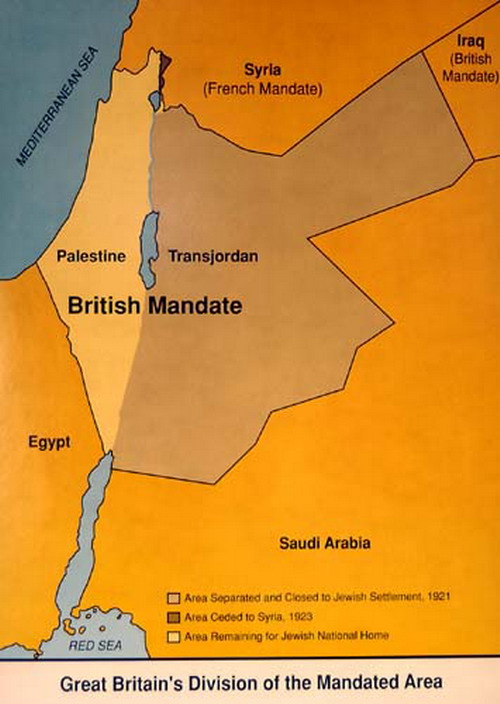 7. The Creation of Transjordan or Jordan as it is now known. The Balfour Declaration of 1917 declared the intention to create a Jewish State in Palestine. The Allies gave legal status to the Balfour Declaration and charged Britain with the task of fulfilling it. The British may originally have intended to include Transjordan as part of Palestine. The first High Commissioner of Palestine was Sir Herbert Samuel. He was Jewish, had served in British Governments, and had advocated the establishment of a Jewish polity in the Holy Land on several occasions. In August 1920, Sir Herbert Samuel requested to extend the frontier of British territory beyond the River Jordan and to bring Transjordan under his administrative control. The request was rejected. Transjordania or Trans-Jordania, as a British protectorate was established in April 1921. The brother of Feisal, Abdullah, was made King of Transjordan. These changes had been preceded by serious and costly revolts in Iraq and riots in Palestine. A need was felt to placate Arab sensibilities and Muslim unrest throughout the British Empire. In September 1922 the Council of the League of Nations recognized Transjordan as a state under the British Mandate. The Transjordan memorandum excluded the territories east of the River Jordan from all of the provisions of the mandate dealing with Jewish settlement. The Jews had a rightful claim to Transjordan according to the Bible. It is difficult however to understand them having had any claim to it in the light of international treaties or similar understandings. Jewish nationalists would do well to emphasize their Mandate from the Bible over the Promised Land rather than the vague promises (or lack of them) of worldly powers, see The Land of Israel. In 1948 as a result of the Israeli War of Independence, Transjordan (later renamed Jordan) conquered and annexed east Jerusalem and the areas of Palestine known as the West Bank. This annexation was only recognized by Britain and Pakistan and by no other nations. After 1948 a large number of Palestinians had moved to Jordan. They now number about 80% of the population in Jordan. The real rulers of Jordan however are antagonistic to the Palestinians. These ruling groups are derived from the Hashemite family backed by Beduin nomadic groups, and by Circassians. The Circassians are descendants of Muslims who fled Russian control of the Caucasus and were resettled by the Ottoman Turks in isolated pockets throughout the Ottoman Empire. They have been quoted as identifying themselves with the ancient Hittites. ==== ==== 8. Lebanon. 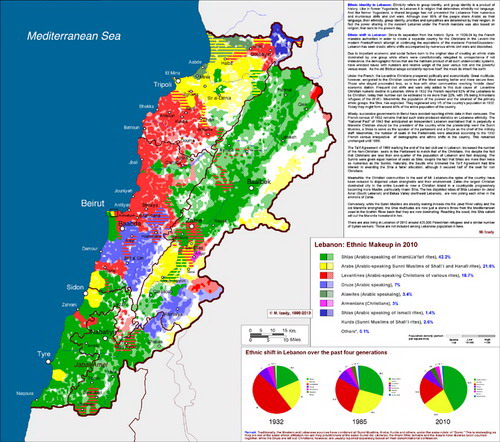 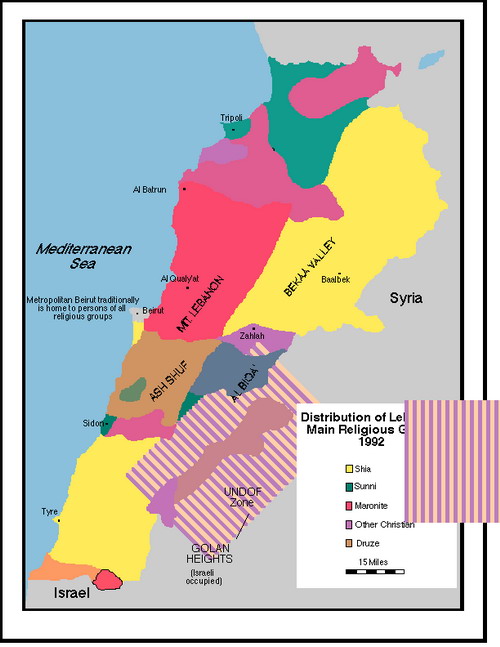 Lebanon was originally peopled by Phoenician-Canaanites along the coast. Israelite Tribes and other groups were also important. The Israelite Tribe of Asher had been given much of Lebanon as its tribal heritage. The Crusader state of County of Tripoli (1109-1289) founded by Raymond IV of Toulouse from southern France encompassed most of present day Lebanon. The local Christians were known as Maronites. The Maronites were descended from inhabitants of Lebanon who had become Christians in the 300s and 400s CE. They had then moved to the mountain region to escape persecution by the Romans. As a result of the Crusades the Maronites gave their allegiance to the Pope in Rome. This made them Roman Catholics as distinct from other Christian groups who at that time followed the directions of Constantinople i.e. Greek Orthodox Christianity. # These initial contacts led to centuries of support for the Maronites from France and Italy, even after the fall of the Crusader states in the region. # Under Ottoman Turkish rule the French intermittently tried to intervene in Lebanon in attempts to protect the Christian population who suffered from Moslem and Druze hostility. In 1923 France received the League of Nations Mandate for Syria and Lebanon. Under the French (1923-26) more than 50% of the population were Christians and they controlled most of the country. Lebanon became formally independent in 1943. The last French troops withdrew in 1946. In 1975 the Lebanese Civil War pitted a coalition of Christian groups against the joint forces of the PLO, left-wing Druze and Muslim militias. In June 1976 Syria sent in its own troops. The war ended at the end of 1990. It is estimated that 150,000 people were killed and another 200,000 wounded. Some 900,000 people, representing one-fifth of the pre-war population, were displaced from their homes. Parts of Lebanon were left in ruins. The Christians lost their previously dominant position. Paradoxically it had been the French who expanded the borders of Mount Lebanon, which was mostly populated by Maronites and Druze, to include more Muslims. Hundreds of thousands of Palestinian refugees as well as Moslem settlers from northern Syria had entered Lebanon. The Christian birthrate was much lower than that of their Muslim neighbors. Many of the Christians emigrated. They are still emigrating. At present 54% are Muslims, 41% Christians, 5% Druze. More than half the Christians are Maronite Catholics. The rest are mainly Greek Orthodox, Greek Catholic, or Armenians. ==== ==== 9. The Ancient Reubenite and Israelite French Links with Lebanon and Syria.  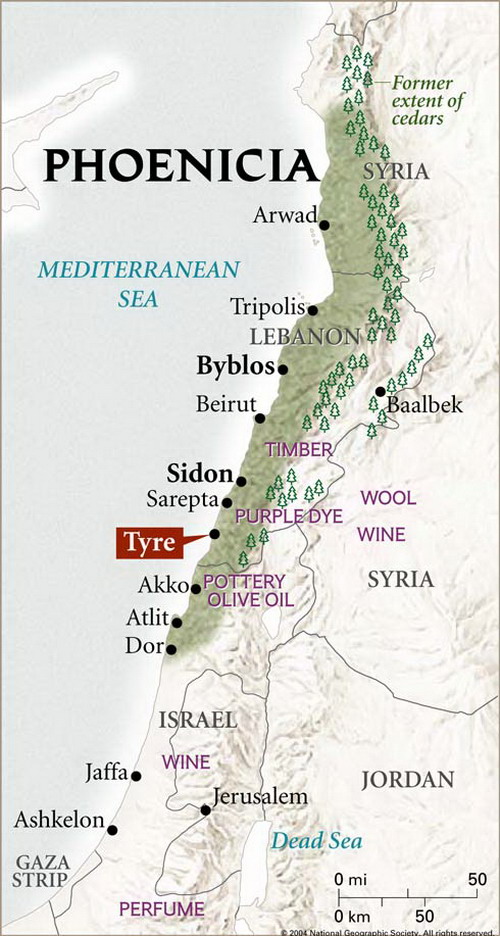 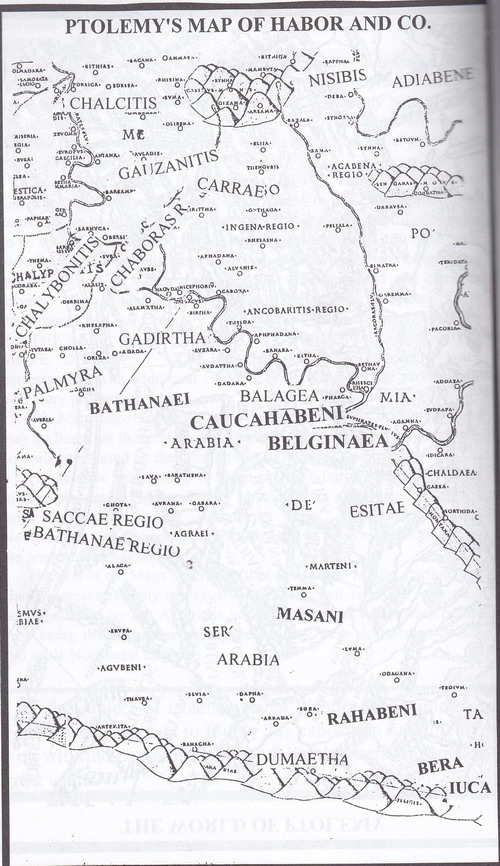 In early Medieval and Modern Hebrew the country of France is called "Zarephath". Zarephath (Sarapata) was originally a Phoenician town, "Zarephath which belongeth to Zidon" (1-Kings 17:9) in which Israelites also dwelt. Throughout ancient Gaul and especially on the northwest coast there are signs of Phoenician or Israelite settlement. It may be that France received the name Zarephath for ethnic reasons due to some connection with the mixed Israelite Phoenician center of Zarephath (Daat Sofrim). The name, "Zarephath", is also recalled in the Book of Obadiah. Most of the Classical Rabbinical Commentators said that the name Zarephath in the Book of Obadiah meant France (Rashi, Radak, Daat Sofrim), or the North in general (Nachmanides, Sefer HaGeulah), or (according to Abarbanel) France and England together. The verse in question (Obadiah 1:20) has been shown as referring to the Lost Ten Tribes. See: THE LOST TEN TRIBES AND TSEREFAT http://www.britam.org/Proof/geo/geoTserefat.html A significant element amongst the French are descended from the Tribe of Reuben. France also includes input from Gad, Manasseh, Simeon, Judah, Levi, and othe Israelite Tribes. In Biblical times Reuben had been dominant in the area now known as Syria. This is discussed below. Reubenite origins shed light on the traditional French attachment to these regions. The Israelite Tribe of Dan was also to be found in Northern Syria: Deuteronomy 33: 22 And of Dan he said: Dan is a lion's whelp that leaps forth from Bashan . Bashan was in East Syria and on the Map of Ptolemy is remembered under the names of Bathanaei and Bathanae Regio. See: Dan and the Serpent Way. Dan in Northern Israel, Greece, and Elsewhere http://britam.org/dan3.html ==== ==== 10. The French in Syria The French has established contacts with the Alawis even while Syria was under Ottoman rule (Pipes). After World War 1 it took France three years from 1920 to 1923 to gain full control over Syria and to quell all the insurgencies that broke out, notably in the Alawite territories, Mount Druze and Aleppo in the north At the end of the rebellion (ca. 1923) of Syrians against the French, there was a famine and ca. 30% of the population of Syria perished. Revolts against France, mainly led by the Druze, continued to take place. The French also had had trouble with part of the Alawites though most of the Alawis were in favor of their presence. Despite some initial fiction conflicts the French on the whole used the Alawites to help them rule Syria. They established autonomous regions in Alawite areas and encouraged the Alawites to serve in the army and police forces. The French considered the Alawites to have martial qualities. In general the Alawites very much preferred French rule to the prospects of an independent Syria. With the fall of France in 1940 during World War-2, Syria came under the control of Vichy France. Moshe Dayan, future Israeli military commander and politician, lost his eye while guiding Australian soldiers on a raid into Vichy controlled Syria. The British and Free French occupied the country in the Syria-Lebanon campaign of July 1941. Continuing pressure from Syrian nationalists and the British forced the French to evacuate their troops in April 1946. A republican government dominated by Sunni Muslims took control. They were destined to be displaced by the Alawis. ==== ==== CONTINUED At: Syria and its Neighbors no.2
|
Pleased with what you read?
Through helping us, God willing, you will bring a blessing on yourselves and on others.
Click Here to make an offering. |
 |

